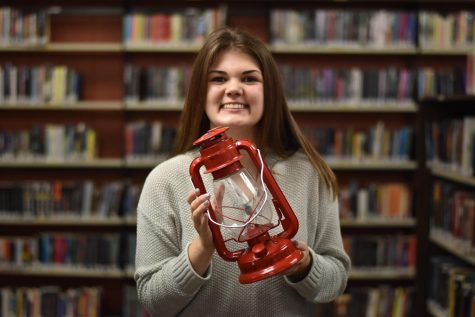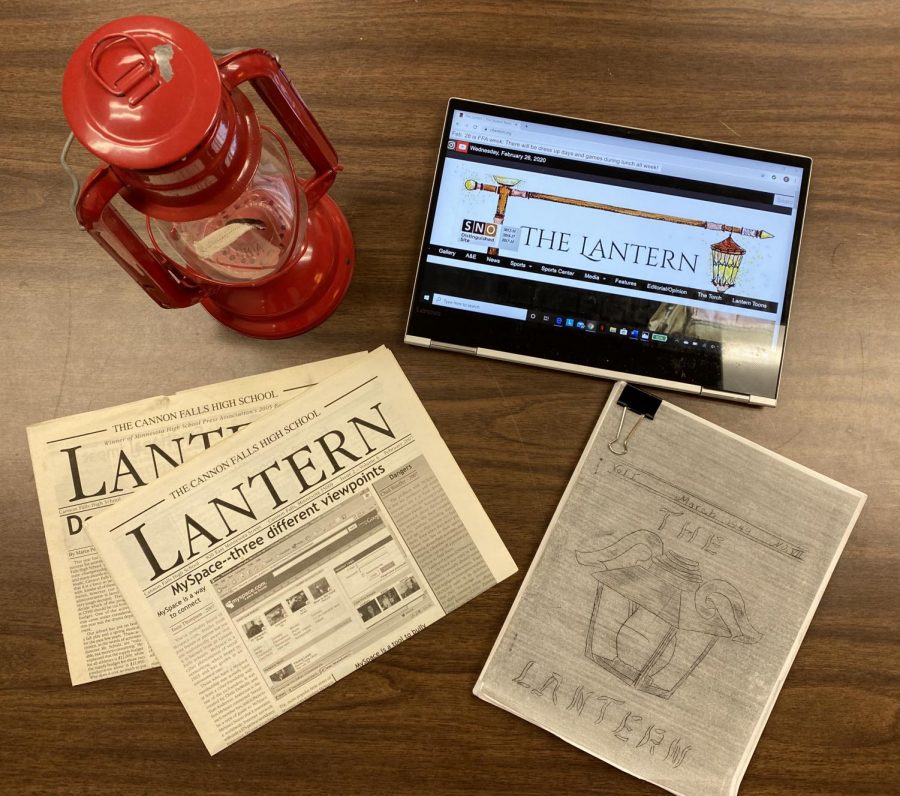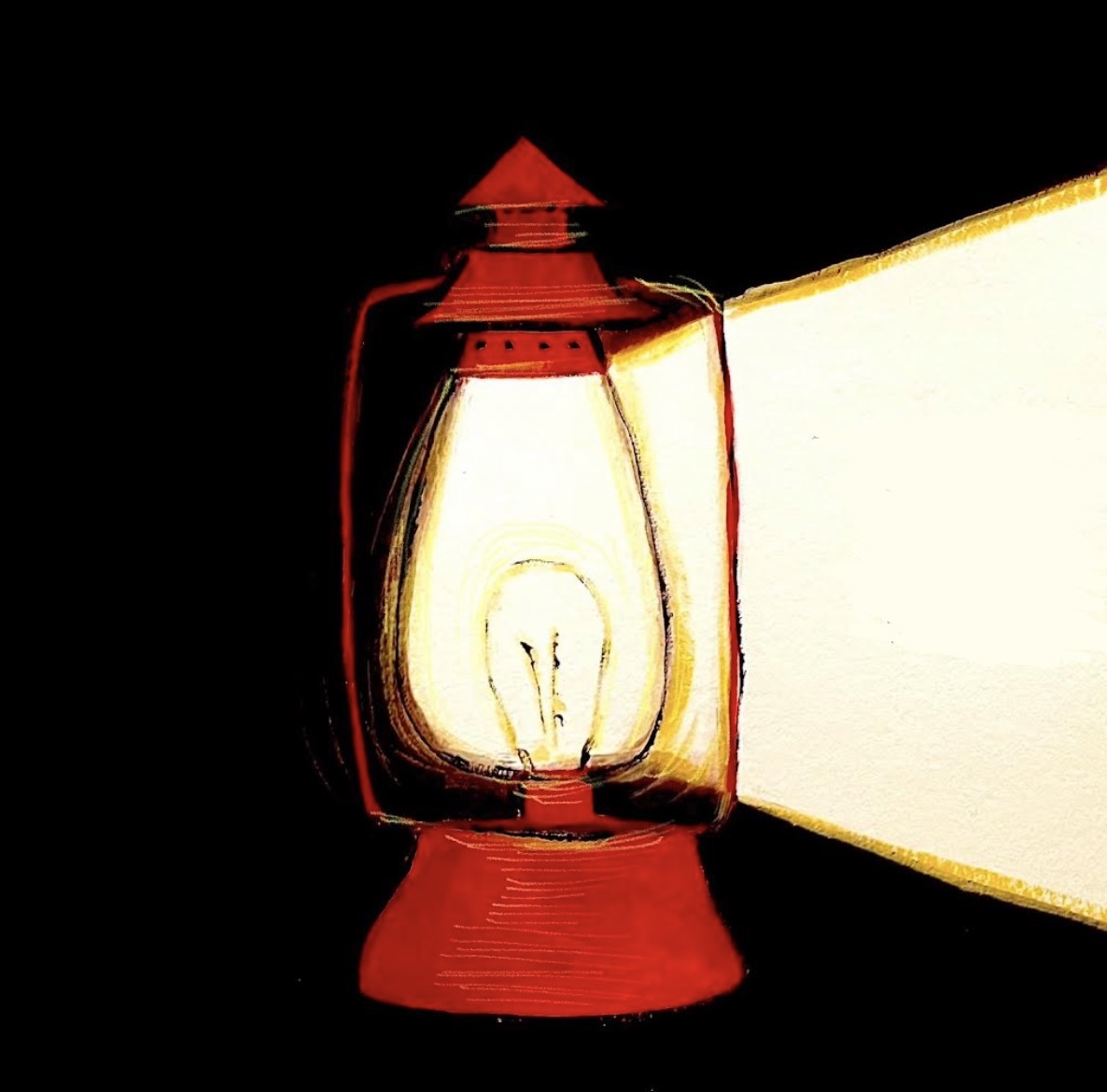Now and then
After sifting through old printed papers, a staff writer reflects upon the evolution of a school’s newspaper.
The school newspaper traces its roots back to the 1940’s
After a long day at school, there is nothing quite like going home, grabbing a box of Cheez-its and sitting down on the couch in preparation for a five-hour NCIS marathon. For those who are young at heart, maybe some good quality time with Disney Plus. Either way, when kids get time to relax they are immediately drawn to a screen. With so many forms of entertainment instantly available online, there is really no need to spend free time reading a book or newspaper. However, this begs the question, what would today’s youth use their free time for in a time with *gasp* no electronics? Though it seems unimaginable, there was a time where electronics didn’t exist. For fun, people would go so far as to interact with others and do things like read newspapers. But it could be hard to get newspapers printed in a timely manner so that news was still recent. This especially presented a challenge to school newspapers that were only produced once a month. Because of issues with time relevance, school newspapers were much less news and much more gossip and entertainment, as demonstrated by a recently unearthed 1949 copy of The Lantern.
The paper was given to The Lantern’s adviser, Mr. Fogarty, by a student who received it from her grandpa. It was printed all the way back in 1949 and had to be sent to a printer who would arrange the articles, set columns, and then print the paper, sending it back to the school a few days later. Printing the actual newspaper was very expensive, especially for school districts who, more often than not, would be paying for these papers to be printed. After being printed, the papers were handed out to students in study halls and other classes where they would be glanced at and thrown away. Aside from distinct differences in getting the information published, the old newspaper also had very different content compared to more recent papers.
When scanning a school newspaper or newspaper website, one is likely to find articles about school activities, sports, special events or students. However, this is not the case with The Lantern’s seventy-two year old 1949 edition. Instead of featuring information and events, this ancient relic focuses primarily on entertainment. While it covers sports statistics and brief updates on how the girl scouts are doing, the pages are filled with poems, jokes, editorials on manners, and even columns about style (corduroy was all the rage in 1949). Much of that published in the old newspaper also shined a light on the student body in a way that would be frowned upon in today’s society to say the least. Class poems circling around students’ love lives as well as lists of the best looking students in every grade were among these. Referring to the paper’s subject matter The Lantern’s current Co-Editor-in- Chief, Emma Conway, affirmed that “A lot of the stories are more gossipy or comedic and we tend to stay away from that kinda stuff. We’re less gossipy and more of here’s the facts; here’s what’s going on at school,” reinforcing the differences between papers now and then.
A lot of the stories are more gossipy or comedic and we tend to stay away from that kinda stuff. We’re less gossipy and more of here’s the facts; here’s what’s going on at school
— Emma Conway
Of course, when looking at the evolution of school newspapers one of the biggest contrasts is form. Needless to say, in 1949 having a website was not an option. But, today, with alternative publishing options available, printing papers is an even more costly and time consuming process. One that has caused many issues in schools. Six years ago, the Cannon Falls school board decided to drop The Lantern. Printing out a newspaper was very expensive and was eating up district funds. Not to mention, finding an adviser for The Lantern was proving to be a difficult task as the adviser was constantly changing from teacher to teacher. Luckily, once the board decided to get rid of The Lantern, its current adviser, John Fogarty, decided to step in. “I didn’t want to see it end, so I went and made a proposal that we shift it all to online,” he stated. The board agreed due to the significantly lower cost and the promise of an adviser. Fogarty stressed at that time, “We could reduce the cost dramatically and still have a good paper. More importantly, have current news and do things that are visual because old newspapers weren’t in color and it’s hard to do video on a hard copy newspaper.” Ever since Fogarty has been the adviser of The Lantern and the website has been online, things regarding the paper have been going much smoother. Fogarty attested that “I think that it has really changed for the better.”
I didn’t want to see it end, so I went and made a proposal that we shift it all to online
— John Fogarty
Overall, how information is communicated has changed a ton in the last 70 years. Going from ink and paper to pixels on a screen is incredibly different. Not to mention, what information is communicated has been greatly altered as well. Discovering and reading an edition of the Lantern from 1949 really serves testimony to this. Where kids now opt to watch a TV show or play video games, their great-grandparents may have picked up a glorified gossip column about their classmates to pass the time. It’s safe to say that most of us don’t want to spend free time reading newspapers. But the history behind them really shows how significant they were and how significant they can be.

Hi Everyone! My name is Lauren Ritz and I'm a senior editor-in-chief for the Lantern. When I'm not editing articles and cooking up graphics, I enjoy playing...

Emma Conway is a senior Editor-in-Chief for The Lantern. As a Yearbook Editor, Speech Captain, Student School Board Representative, MHS Historian, and...


